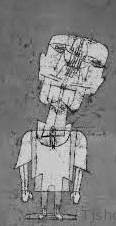the Coleman argument
In 1994 Sidney Coleman gave the lecture 'Quantum Mechanics in Your Face' which was recorded and the video is available here. Near the end he makes an argument, actually attributed to Dave Albert, which is nowadays often used in debates about the meaning of quantum theory (usually people just link to the video without discussing the argument(s) much further).
But, as we shall see, it does not really work the way people think it does.
Consider a quantum system (e.g. electron in a Stern-Gerlach apparatus) which evolves from an initial state |i> into a superposition |a> + |b> (*). An observer (named Sidney) makes a measurement and evolves from an initial state |I> into a superposition |A> + |B>. How can we reconcile this superposition of observer states with our everyday normal conscious experience?
Well, consider all the states |Sj> of 'Sidney with a normal conscious experience', where j supposedly labels all the different conscious experiences Sidney can have. All those states |Sj> are eigenstates of the 'consciousness operator' C so that
C|Sj> = |Sj>.
It is clear that |A>, which here means 'Sidney observed |a>', is an eigenstate of C and also |B> is an eigenstate of C,
C|A> = |A> and C|B> = |B>.
But it follows immediately that |A> + |B> is then also an eigenstate of C,
C( |A> + |B> ) = ( |A> + |B> ), from the linearity of the quantum operator C.
This would mean that the superposition of Sidney states does not really cause a problem; The superposition still corresponds to a 'normal conscious experience'.
So it seems that there is no 'measurement problem' as long as we stay fully within quantum theory. Therefore this argument is very popular with people who want to end the interpretation debate, while I think it may be a good starting point to begin a serious discussion.
In order to see that something is wrong with the Coleman argument, consider that there must be states |Uj> of Sidney where he does not have a 'normal conscious experience', eg. because he is asleep, drunk or worse.
Obviously |Uj> cannot be an eigenstate of C, so that C|Uj> = 0.
The problem is that we have to assume that the initial state of Sidney |I> does not just evolve into the superposition |A> + |B> but it will also contain some components |Uj>, because even for a healthy person there is a small but non-zero possibility to fall into an unconscious state. But as one can check easily, the state
|A> + B|> + |Uj> is certainly not an eigenstate of C and due to the superposition of states Sidney will in general never be in such an eigenstate of C. This would mean that Sidney never has a 'normal conscious experience'.
Obviously, there must be a problem somewhere with this whole argument and I leave it as an exercise for the reader to find it and post it as a comment 8-)
(*) I leave out the necessary normalization factors of 1/sqrt(2) etc. in this text and the reader has to assume that these factors are absorbed in the state vectors. E.g. in the state |A> + |B> + |U> we assume that |U> comes with a very small weight/probability, but I do not make this small pre-factor explicit.
Subscribe to:
Post Comments (Atom)

3 comments:
I think the problem is that one cannot define this operator C - I mean how would we define it to measure consciousness?
One can construct C from the states |Sj> formally as the sum
|S1>(S1| + |S2>(S2| + ...
where (..| stands for the left-bracket, which I cannot use here due to html 8-)
So (to answer the question at the end of the post) the problem must be with the Sidney states |Sj> and indeed if consciousness requires a macroscopic brain one would have to deal with the fact that it necessarily is entangled with the environment and thus the whole world.
But if |Sj> is a wave function of the whole world it does no longer make much sense to assume if and what conscious experience is associated with it.
Post a Comment